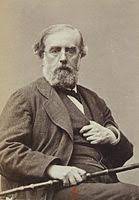
Photographers
Robert Jefferson Bingham
1824 — 1870
Robert Bingham was an English pioneer photographer, mainly active in France, making portraits and reproductions of paintings. He had a background in chemistry and was particularly interested in photographic processes and published a treatise on this subject in 1848. He later became the first writer to outline the possible use of collodion in photographs and the self-proclaimed 'Inventeur du procédé collodion'. He first exhibited his photographs of landscapes and of copies of paintings in London at The Great Exhibition in 1851.
The collodion process involved adding a soluble iodide to a solution of cellulose nitrate and coating a glass plate with the mixture. In the darkroom the plate was immersed in a solution of silver nitrate to form silver iodide. The plate, still wet, was exposed in the camera. It was then developed by pouring a solution of pyrogallic acid over it and was fixed with a strong solution of sodium thiosulfate. Once the photograph was developed, prints could then be produced from the glass negative.
In 1859 Jefferson established a photographic portrait studio in Paris, which thrived throughout the 1860s and continued under his name even after his death in Brussels in 1870. The National Portrait Gallery in London holds more than 20 of his photographs.
Last Updated on: 2024-02-28
